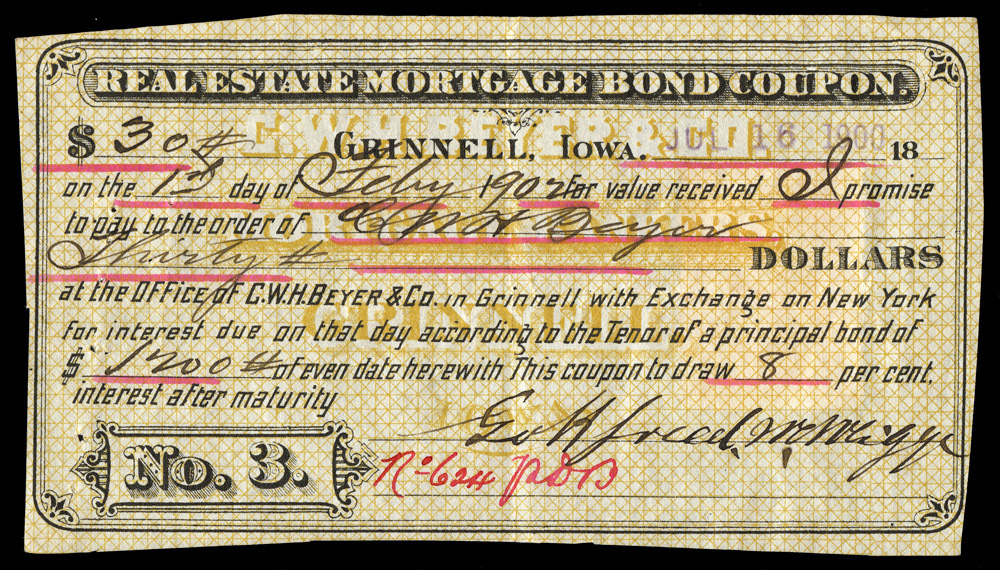
What was the taxable transaction on this bond coupon?
Great aesthetics, but I’ve never seen revenue stamps affixed to individual bond coupons before. Redemption as part of the estate settlement? I’ve tried to find similar examples online, but to no avail.
Thoughts?
Response from revcollector (Bart Rosenberg):
Since it is marked by the estate, it would appear that the original person to receive the money died so the money went to the heirs. That transfer is probably the reason for the tax. I have the 1898 laws put away someplace, I will try to look it up later. Nice item.
Response from revenuermd (Ron Lesher):
I agree with Bart on the interpretation. It is functioning like a check, thus the 2¢ tax. Although I have never seen an examples taxed thusly in the Civil War era, every time there was an endorsement to transfer the funds to a different payee, the instrument was subject to an additional 2¢. In the field of revenue stamped paper, certified checks were often passed on to multiple payees with another endorsement. But I have never seen the additional 2¢ added to the checks.
Response from rustyc:
Since it is payable on a date certain, it looks like a promissory note to me.
Response from revenuermd (Ron Lesher):
The coupon itself is not taxable, because the bond itself was taxed. The phrase “Pay to the order of” converts this to a sight draft and subject to 2 cents tax.
My response:
I agree that on it’s face it looks like a promissory note/sight draft, but if the boilerplate language on the coupon results in a taxable transaction, why don’t we see more of them with revenue stamps affixed?
Normally I am hyper-wary of the hyperbole on items in Aldrich auctions, but in this case I cannot recall seeing anything similar.
Response from revcollector (Bart Rosenberg):
Because most coupons were clipped by the person who owned the bond, so there was no tax on the coupon. The original owner’s death changed that equation in this case.
Response from revenuermd (Ron Lesher):
The initials on the stamp itself may be of George H. Fr(?) the executor (?) of the estate of James B. Crosby. can anyone think why the estate would be paying the interest back to the maker of the bond, C. H. W. Beyer (& Co.)?
As to the wording on the coupon making some of us think of this as a promissory note, isn’t that what a bond is? Money is borrowed, interest is specified when it will be paid and the bond eventually matures and the principal is due at that date.
I still believe that is being taxed as a sight draft.
